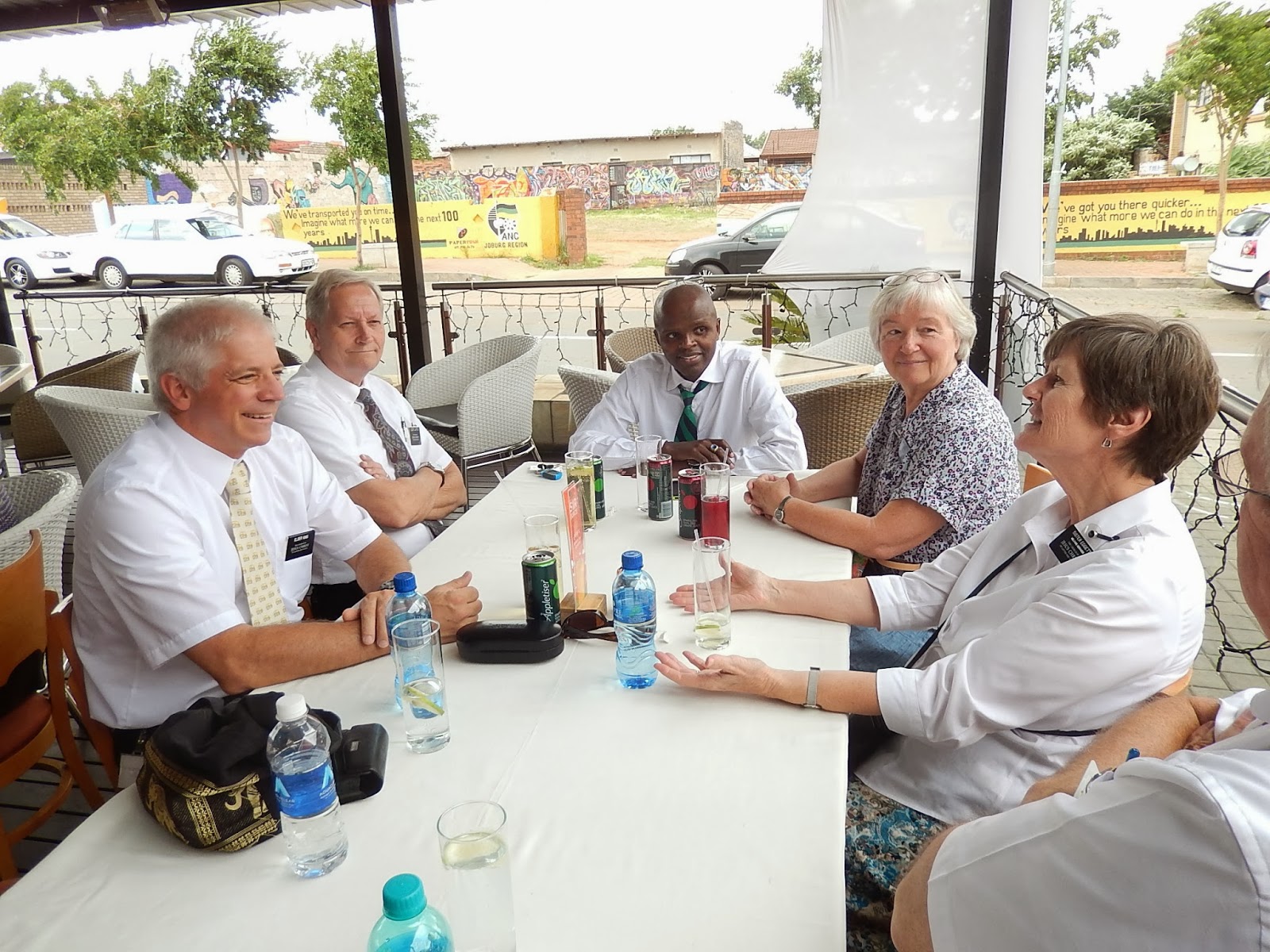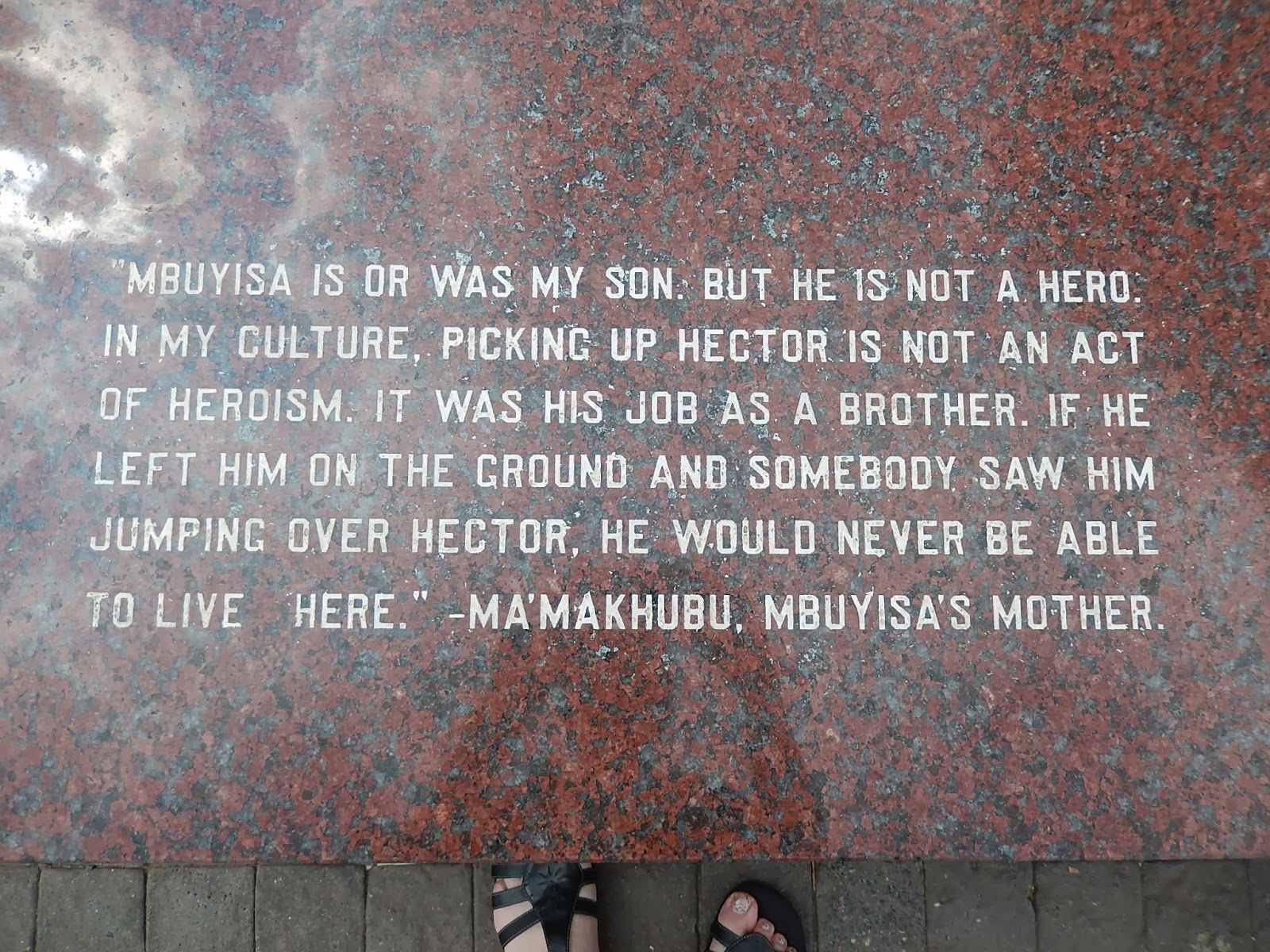On Friday afternoon, six of us (with Claytons and Eggets), took a little time off to go with Brother Khumbulani Mdletshe (CES Institute Director) on a tour of the township of Soweto.
He first gave us a little history of South Africa ... here is a wee bit of it ...
1647 was the year the first white man came to South Africa. A Dutch ship marooned near Cape Town and the first European settlement began. In 1910 the Union of South Africa was created with no voting rights for blacks. 1913 a land act decreed that native populations could only own 13% of the land. The rest of the land could be owned by the 10% white population. 1925 Afrikaans is made an official language. 1948 Apartheid is institutionalized. 1960 Sharpeville massacre. Zulu's were protesting the requirement to carry identification papers, being treated like a visitor in their own land. 1964 After many years of peaceful protests being completely ignored, things got violent & Nelson Mandela was sentenced to life in prison for his leadership in the uprisings. 1976 Soweto uprisings. School children opposed the mandate to be instructed in the Afrikaans language rather than in their native tongue. 1990 Nelson Mandela freed from prison after 27 years. He preached forgiveness and reconciliation and was elected president of South African National Congress (ANC) which become the ruling political party.
 |
| Grave
of Walter Sisulu, one
of the architects in the anti-apartheid struggle & close friends with Nelson Mandela |
Next stop Regina
Mundi Catholic church. This church
became a refuge for students during the Soweto uprisings in 1976. Police followed the students into the church
and fired shots. This caused panic among
the students and they attempted to find an exit and flee. Several bullet holes have been preserved in
the structure to bear witness against the brutality of the police.

 |
| When Mandela would speak here, he never stood up on the riser but down on the level of the people to show respect and equality. |
 |
| Ate lunch in a café on Vilakzai Street. Brother Khumbulani encouraged Chris to try the Zulu delicacy, tripe. Debbie was glad she chose Greek Salad because man oh man that tripe was smelly! |
 |
| We
were entertained by a performing group of young men who danced a Zulu dance. They were excellent and we got a great video that I hope to post soon. |
Next stop, Hector Pieterson museum
which overlooks the square where the Soweto uprisings began and 23 people were
killed by police in their response to a peaceful student demonstration. This
set off a chain of violence around the country marking the 1st
internal challenge to the apartheid government.
13 year old Hector Pieterson was killed by the police which became and
international news story. Hundreds were killed in protests in South Africa. International condemnation and pressure on the government for
change increased.
Our final stop was at one of our church buildings in Soweto. This building was built during apartheid. It
It's just not right at all that any people should come into a land of another people and take over. So many lands on this Earth have had this happen -even our own land. The one thing I was most surprised about in coming to Africa is the huge inequality between the black people and the white. Things are better now than years ago but the gap is just too huge still. I told Br. Khumbalani that I was grateful for the gospel that calls us brother & sister instead of black and white but that it is sure sad that anyone should have to work so hard just for equality. Someday we will all be equal and live happily ever after in peace and joy and love.









No comments:
Post a Comment